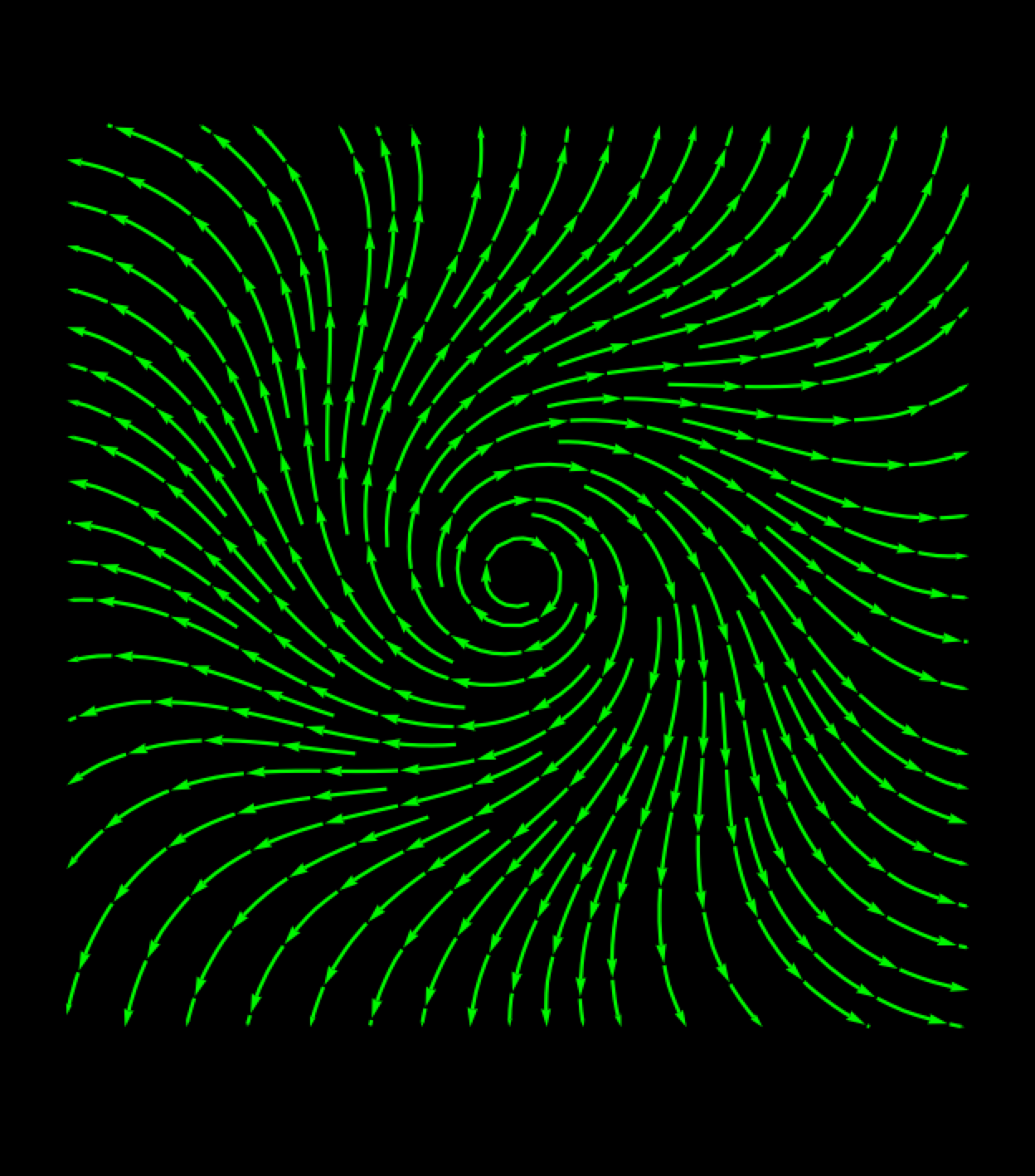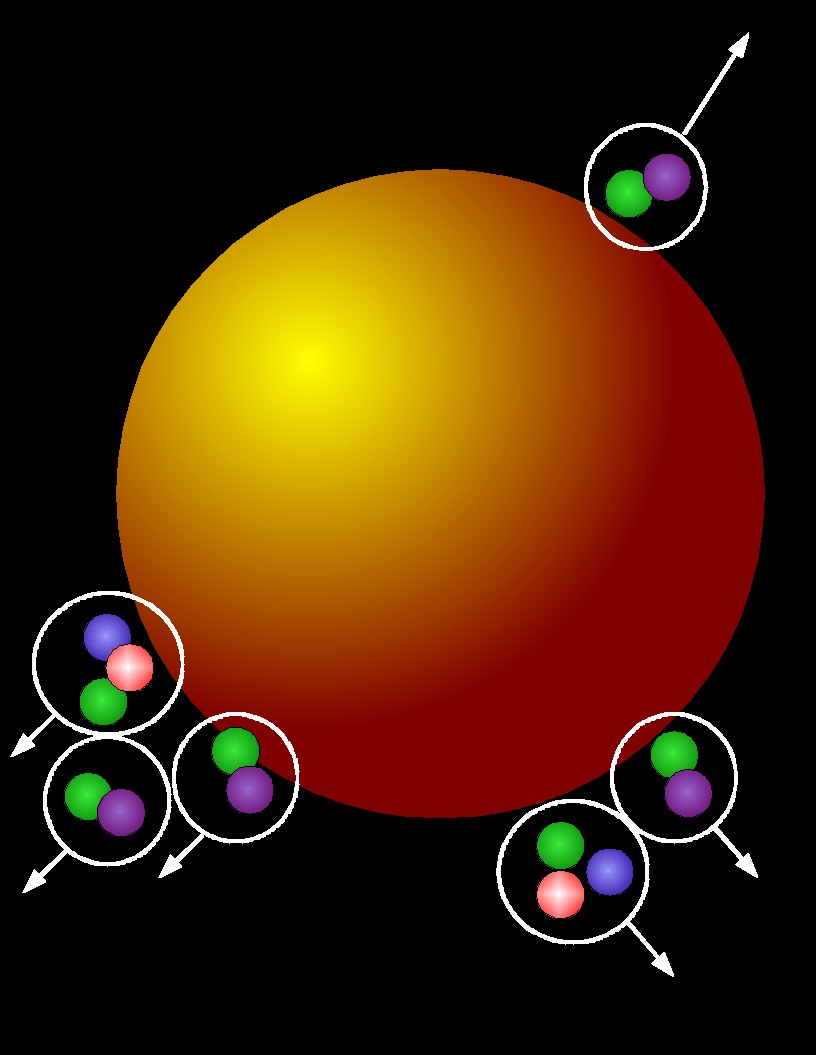
The fact that the Standard Model requires a user to input something like twenty particle masses and couplings is aesthetically unpleasant for many. One way one might hope to remedy this discomfort is by embedding the symmetries of the Standard Model into a larger gauge group. These constructions are an important part of the history of particle physics, and continue to play an interesting role in contemporary physics research. As a project for a graduate class in group theory, I had the opportunity to learn a bit about how these models work:
Solitons and MonopolesField theories are capable of describing an incredibley diverse set of physical systems. Many of these descriptions can be formulated perturbatively, when the relevant couplings are small. However, some theories are able to support physically fascinating (and topologically non-trivial) solutions that are visible even when the interactions are strong. I studied these configurations in a project I produced as a graduate student for an advanced field theory course:
Extended SupersymmetryWhile comparatively simple N=1 incarnations of the supersymmetry algebra in four dimension are favored for particle physics phenomenology, extended algebras in diverse dimensions are playing a prominent role in contemporary physics research. In a graduate course on supersymmetry, I surveyed these extended supersymmetries in various spacetime dimensions:
A beautiful and timely development in string theory is the possibility to explore strongly coupled systems through dualities between certain gauge theories and string theories. These techniques, based on Maldecena's conjecture, have recently been applied to the produced matter at RHIC, often yielding suprising results. Most notably, the correspondance between N=4 super Yang-Mills and 10-dimensional super-gravity has been used to explore everything from parton energy loss to the melting of onium states in the quark-gluon plasma. Below are a few (very) introductory slides that introduce the applications of AdS/CFT to heavy ion physics:
In the summer of 2008, I presented a talk at Hot Quarks surveying contemporary applications of gauge/gravity duality to heavy ion physics:
To advance to candidacy for my doctoral degree, I presented a survey of my work in AdS/CFT. The talk focuses on more recent projects, and includes a heuristic introduction to gauge/gravity duality and its application to physical systems:
GeneralFor fun, here are a few more slides introducing string theory fundamentals, and a written supplement that runs through a few simple calculations. These were the result of an undergraduate particle physics project...
An interesting mechanism by which one might hope to better understand the produced medium in heavy ion collisions is the phenomenon of jet quenching. When highly energetic partons (such as those typically found in QCD jets) traverse the hot matter, the local exchange of energy and momentum could produce a characteristic spatial distribution in the quarks and gluons, which in turn might be imprinted upon subsequently formed hadrons. By studying the spatial patterns of hadrons associated with these quenched jets, one might hope to identify a method of energy loss and predict novel characteristics of the medium, such as its speed of sound or resistance to flow. Understanding how different models of jet quenching would manifest themselves in the particles collected by an experimental detector was the topic of my undergraduate thesis, linked below.
Degrees of FreedomUnderstanding the degrees of freedom available in a quark-gluon plasma is crucial to developing a correct description of the produced medium. For example, is it possible to assign the QGP degrees of freedom associated with quark and gluon quantum numbers? This might imply a medium characterized by ballistically traveling particles, and suggest that the matter might be understood as a relativistic ideal partonic gas. In this naive picture, many thermodynamic properties of the system are easy to work out, and I compiled some of them in a project I completed as an undergraduate:
As a graduate student, I returned to the question of degrees of freedom in the quark gluon plasma, and (with Jamie Nagle, Peter Steinberg, and Alex Linden-Levy) pointed out that a medium described as a perfect fluid (or one very near the vsicosity to entropy density bound suggested by AdS/CFT) cannot support quasi-particle modes that propogate ballistically. Our paper can be found here.


